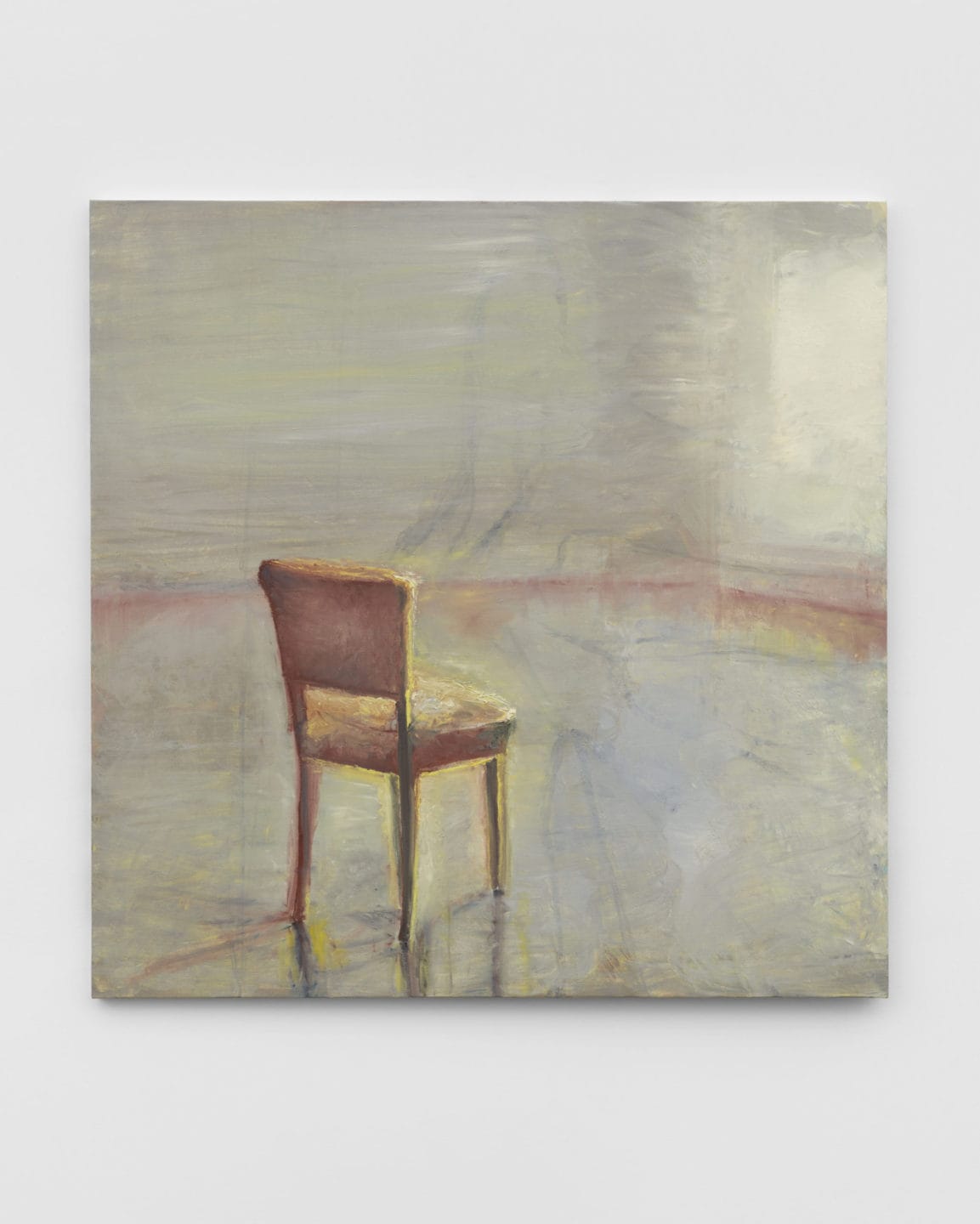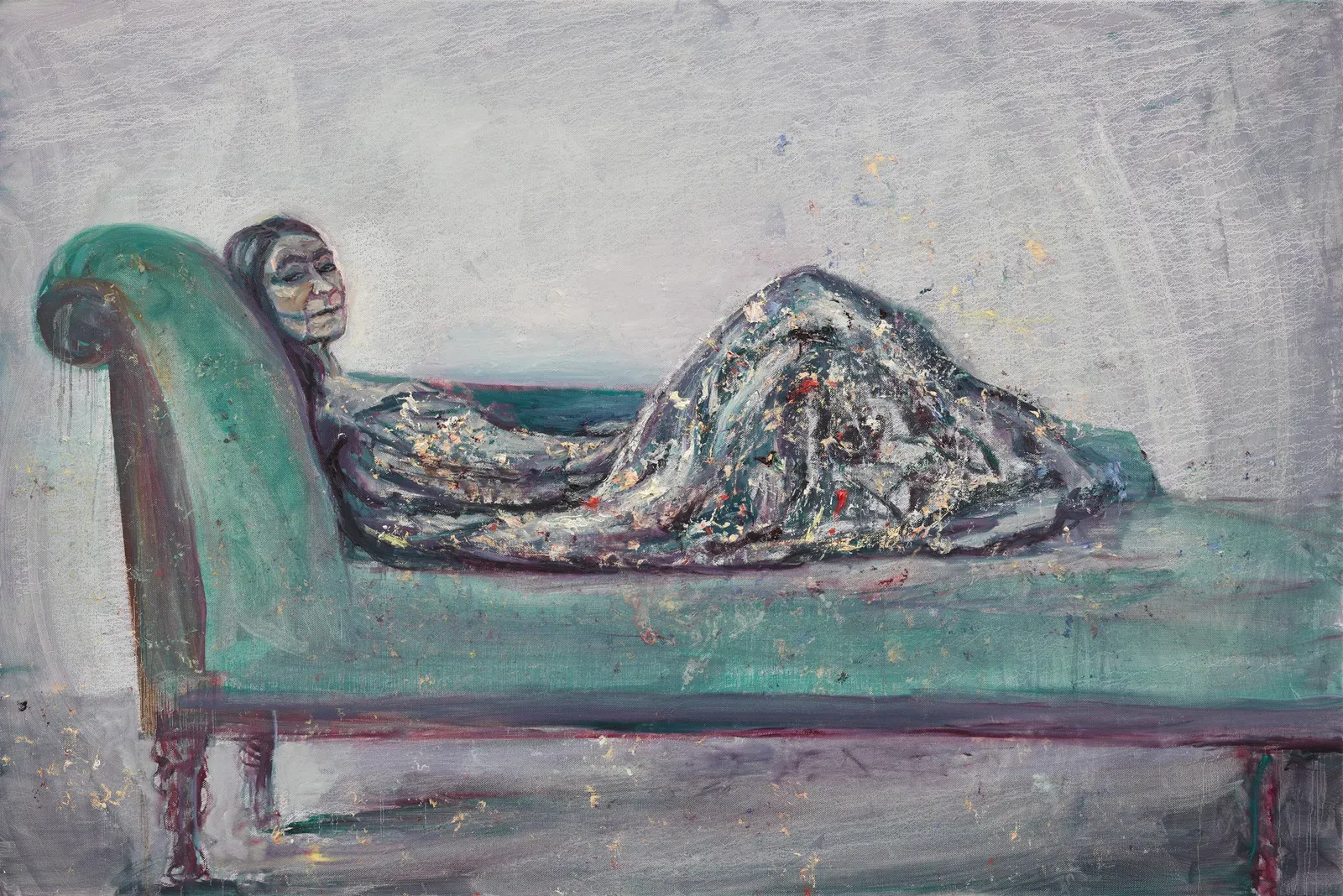Essay: Real Paintings and Fictional Painters (Part II)

Nostos is a weekly newsletter about making a home at the intersection of art and life. Essays is an occasional column that teases out in greater depth how family life appears in culture.
Karl Ove Knausgaard’s profile of Celia Paul, like most of the press she gets, leads with a visit to her flat in London. Based on the descriptions that her interlocutors and interviewers share, it sounds like a theatrically sparse place, a minimally viable configuration of chairs and bed frames that provides just enough surfaces to sit on and gaze into the mid-distance, just enough windows through which to notice a corner of a roof or the branch of a tree, and just enough bare walls against which to lean paintings. Just enough of a space, in other words, for one to focus on the twin projects of looking and being looked at, which she has made the core of her blessedly old-fashioned practice as a painter—a painter of the sort who paints the things in front of her. Knausgaard writes of how he understands her work:
… their distinctive combination of weightlessness and heaviness. The physical, material world that they depicted seemed light in some peculiar way, while their emotional presence was always heavy: the paintings were grounded in feelings. Usually it is the other way around, isn’t it, the material world has weight, and the inner, the spiritual, the abstract are light, and ungraspable, really.
And he might as well be speaking the language of Asle, of the “luminous darkness” that our fictional artist seeks in his paintings. When Jon Fosse (speaking through Asle) writes of how it is only at the darkest moments “when the darkness starts to shine,” this is not only a metaphor for finding the grace of forgiveness and acceptances when the going gets tough; this is very literally how Asle is making his compositions, turning his lights off and looking at them in the gloom of the Arctic dusk, looking for a strength and brightness that he puts onto canvas through overpainting and underpainting. Through the materiality of the painting, Asle incorporates the spiritual sense of the ineffable into landscapes, moments, and portraits. This is what Knausgaard is suggesting here: it’s the light that’s heavy. He comments specifically on Celia Paul’s series of paintings of chairs. She explains herself:
I think my chair paintings are self-portraits. I have two identical chairs: one is in my studio—my models sit on it—and this one, the one that I paint, is in the room where I sleep.
Knausgaard on the same chair paintings:
We see not the chair in itself, as that is for sitting on, but the moment it represents, the here and now it lifts forth. Not the world, but our connection to the world. … Shouldn’t someone have been sitting in that chair? In a strange way, the absence of a person reveals another presence, for, though the room is certainly empty, it vibrates with life, and it does so because someone sees it, and that someone exists in the painting, in its colors and shapes.”
Immediately I think of the twin chairs of Septology, one for Asle and one for his late wife, the presence who haunts his home studio and all corners of his life. She, too, was a painter, though as his career progressed and hers stalled she turned inward and focused on icon painting. We cannot tell if she became a contemporary artist interested in icons or if it was purely a hobby so, although she didn’t seem to exhibit widely, I choose to again hold this contradiction loosely and think of her icons as doing what Asle’s paintings do, reflecting back the light in the darkness.

Asle is a rugged individualist of an artist. Though he begrudgingly accepts the companionship of his neighbor and his namesake, his time in the studio is pure solitude. By way of company, he sits and fixes his gaze on a specific portion of the sea. The other chair must remain empty. Celia Paul’s practice, on the other hand, is a profoundly social one. Her work is all about connection. Across the decades, she paints her mother, her sisters, her son, her lover and his friends—all in the same chair, within the same four walls. Her connections to these people matter. That chair glows with the presence of a life lived to the fullest. Knausgaard:
It is easy to think art that leans toward the autobiographical is first and foremost a representation of things or events. But the essential fact about art is that it is an event in itself. It is something that comes into being.
Celia Paul’s Bloomsbury studio, where she has lived since 1982, was a gift from Lucien Freud, her lover, tutor, and portraitist. The space itself, the framework, the walls that surround the chairs, are a part of the practice of living, of loving, of modeling, of painting that she constructed in relationship to him. She has spoken openly of how her work found a new dimension of freedom after he died. Much has been said about their relationship, the degree to which it defines or does not define her work, the extent to which it was positive or healthy or anything else. I’m not sure much of that matters, in that it’s less about that particular relationship and more about the fact of relationship, the field of social connection in which she has chosen to pursue her painting. This is what makes her work so very much of our time. Now in her 60s, Celia has become known for her writing in addition to her painting, and she speaks eloquently on the back-and-forth between these two ways of working:
It is a way of articulating thoughts that otherwise just brew. That can work evocatively in painting. But with words, you need to have order of a different kind. One sentence does have to follow another.
It was her memoir Self-Portrait and the more recent Letters to Gwen John that opened my eyes to the field of connection that underlies her painting practice. Letters, in particular, I find one of the most beautiful meditations there is on how we understand art as a part of life, on how art draws from life and in return gives a sense of shape back to it. In Gwen John, Celia sees a parallel life from another pocket in time—a namesake who lived nearly a century before her.

Like Celia, Gwen John studied at the Slade. Like Celia, Gwen John entered into a relationship with an older artist, and their affair became a defining aspect of how she related to art and to the world. In Celia’s letters, we get a sense of how she goes about her day to day, how she thinks about her paintings, but we also get to look at Gwen John’s work, and at Rodin and their milieu, with fresh eyes. Gwen John’s portraits, particularly her self-portraits, printed alongside Celia Paul’s, are revelatory—modern. And yet:
Gwen never tried to paint Rodin and she made no pencil sketches of him. He was her ‘Maitre’ and she was so overwhelmed by him that she wouldn’t have been able to work from him. … She wanted Rodin to look at her, but she didn’t feel able to return his gaze.
In her newest body of work, Celia’s paintings have taken on something of the religious icon for me, as much as they have also absorbed the social portraiture of Freud. In the press release for the new exhibition, “Colony of Ghosts,” her practice is described as “looping back and forth through time to the people and places closest to her. … Constancy and change, and how the past is always held in dialogue with the eternal present of the painted image, are, for Paul, inextricably linked to a consideration of self.” We see in these images a field of space-time that is turned into light, a living and breathing field of life that comes through every object, every surface, every wrinkle on every face, every knuckle on every hand. Reaching into her own past, like Asle:
My young self and I—we are the same person. I can stretch out my old hand—with its age spots—and hold my young unblemished hand.